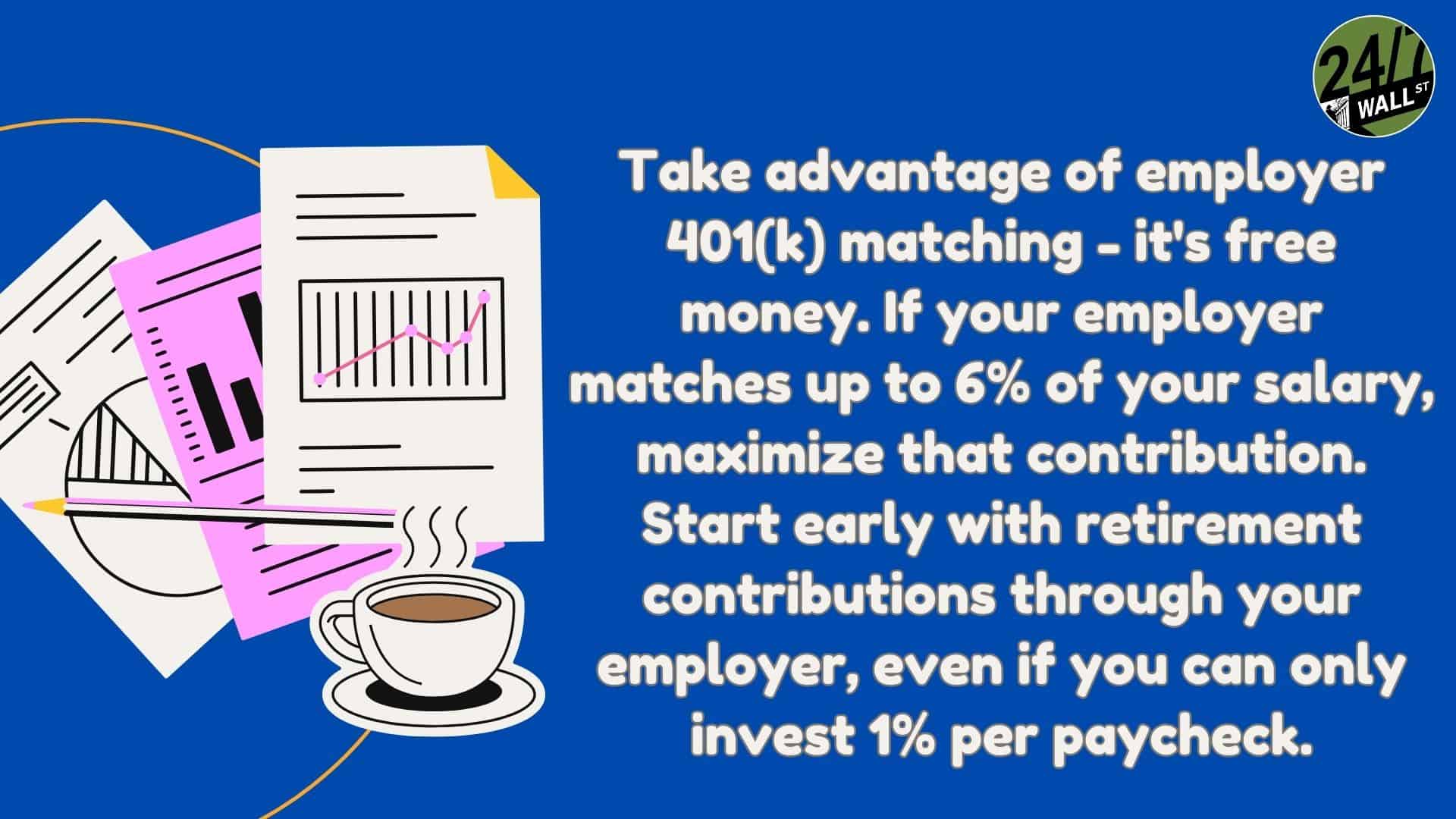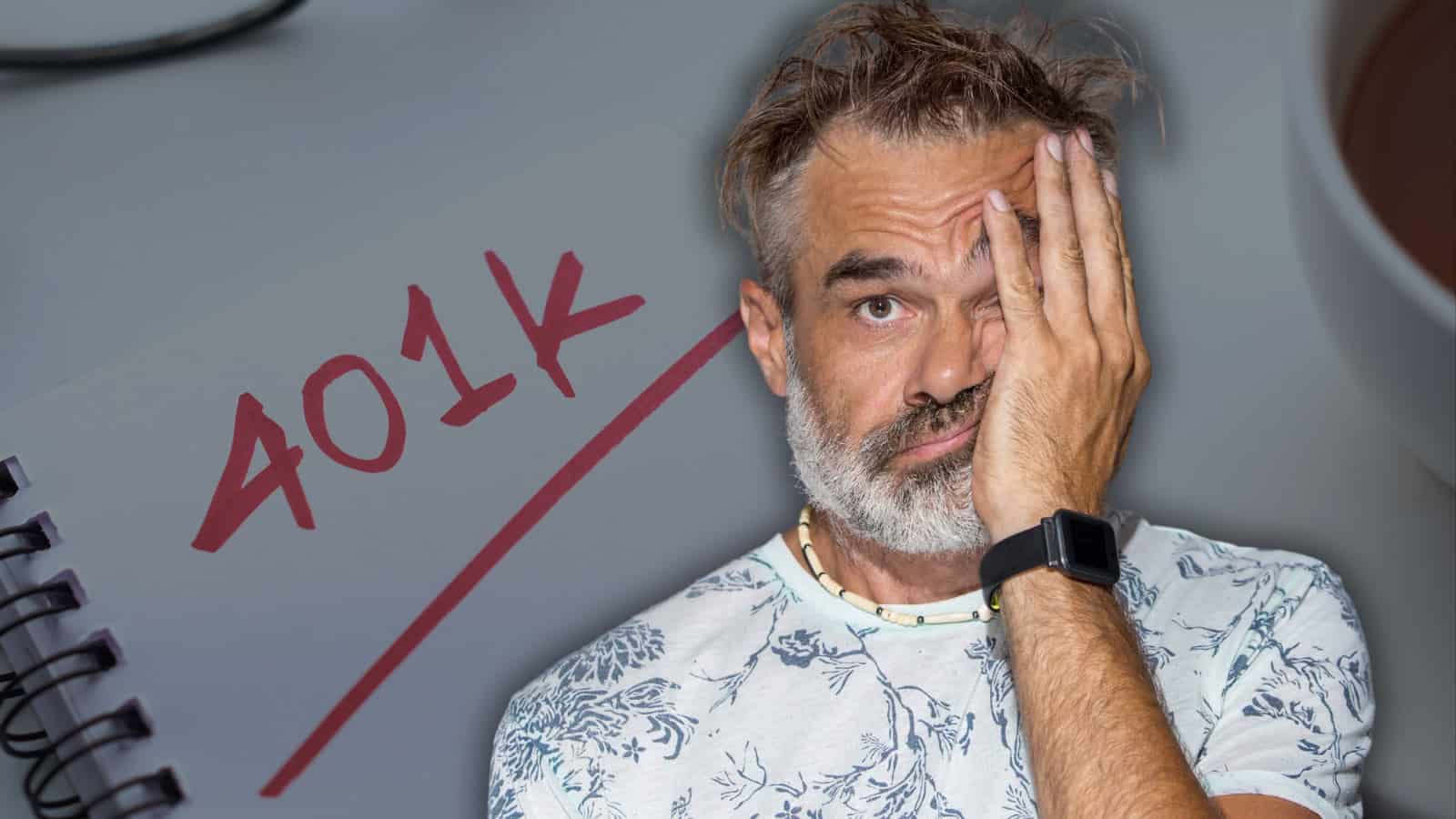Personal Finance
Countless Americans Are Making These Costly 401(k) Mistakes

Published:
Last Updated:

Millions of Americans are relying on their 401(k) to ensure a stress-free retirement.
And for many of us, a 401(k) offers tax advantages, and in most cases, employer matching. All of which can boost your account. Unless of course, you fall within the camp of 41% of Americans who don’t contribute to their offered 401(k), according to a CNBC survey.
For those that do contribute, many make costly mistakes.

About 33% of middle-class Americans cash in their retirement savings before they retire, notes Kiplinger.
But by doing that, they’re risking not having enough cash through retirement. Plus, many don’t realize that if you withdraw money from your 401(k) before the age of 59.5, you get hit with early withdrawal penalties, which aren’t worth it.
Eliminating debt with 401(k) funds is tempting. But again, you’ll get hit with at least a 10% penalty for withdrawal before the age of 59.5. Plus, you’ll get hit with income tax. It’s really not worth the expense or the aggravation of lost retirement funds.
If you don’t contribute enough to qualify for employer matching, you’re leaving money on the table. If you have an employer that will match your 401(k), maximize your contributions up to the amount your employer will match. If your employer will match up to 6% of your salary, maximize that. To really build your wealth using that employer match, start early with your employer, even if you can only afford to invest 1% of each check into retirement.
Consider this. Let’s say you earn $100,000 a year and that your employer will match 50% of your contributions up to 5% of your salary or $5,000. With your contribution and the employer match, $7,500 is saved every year. Over 30 to 40 years of that, you’ll have a solid balance.
By not taking advantage of the match, you’re leaving free money on the table.
When you switch jobs, you’re 401(k) doesn’t just roll over. Unfortunately, millions don’t realize this, or forget they had a 401(k) with a previous employer. That would explain why there are an estimated 29.2 million forgotten 401(k) accounts, as of May 2023, according to Capitalize. Those forgotten funds add up to $1.65 trillion, or 25% of all 401(k)s.
If, by chance, you’ve forgotten one, you can always track it down. You’ll want to track down plan statements, contact a former employer, and even contact the Labor Department. You can even look through the National Registry of Unclaimed Retirement Benefits. Once you’ve found your lost 401(k) information, you can roll it into your current employer plan or roll it into an investment retirement account (IRA) with direction from a financial planner.

This can cause a good deal of ridiculous chaos.
Granted, this isn’t the most pleasant topic, but it’s important to know. If you die before your 401(k) is cashed out, it will go to the person you name on the beneficiary form. This should be updated over time, or your money could go to someone you really didn’t want it going to, such as an ex, which I’ve seen happen. Some have even failed to designate a beneficiary, the 401(k) will become part of your estate, which will then have to go through probate, which is a royal pain in the backside.
One of the best things you can do at any age is check with a financial advisor or even your company’s plan administration. All to gain a better understanding of your chosen plan. You’ll also want to consider your risk tolerance. Do you want to get aggressive or conservative?
You’ll also want to be aware of fees.
According to the U.S. Department of Labor, plan fees can fall into three categories. That can include plan administration fees, which include necessary administrative costs. In some cases, administrative feeds are covered by investment fees deducted from investment returns. Other fees can include investment fees or the fees associated with the management of your retirement account. Some may even have individual service fees, which can come into play with optional features offered under a 401(k) plan. To learn about fees impacting your retirement accounts, you’ll want to check with your company’s plan administrator or a financial advisor.
Start by taking a quick retirement quiz from SmartAsset that will match you with up to 3 financial advisors that serve your area and beyond in 5 minutes, or less.
Each advisor has been vetted by SmartAsset and is held to a fiduciary standard to act in your best interests.
Here’s how it works:
1. Answer SmartAsset advisor match quiz
2. Review your pre-screened matches at your leisure. Check out the advisors’ profiles.
3. Speak with advisors at no cost to you. Have an introductory call on the phone or introduction in person and choose whom to work with in the future
Thank you for reading! Have some feedback for us?
Contact the 24/7 Wall St. editorial team.